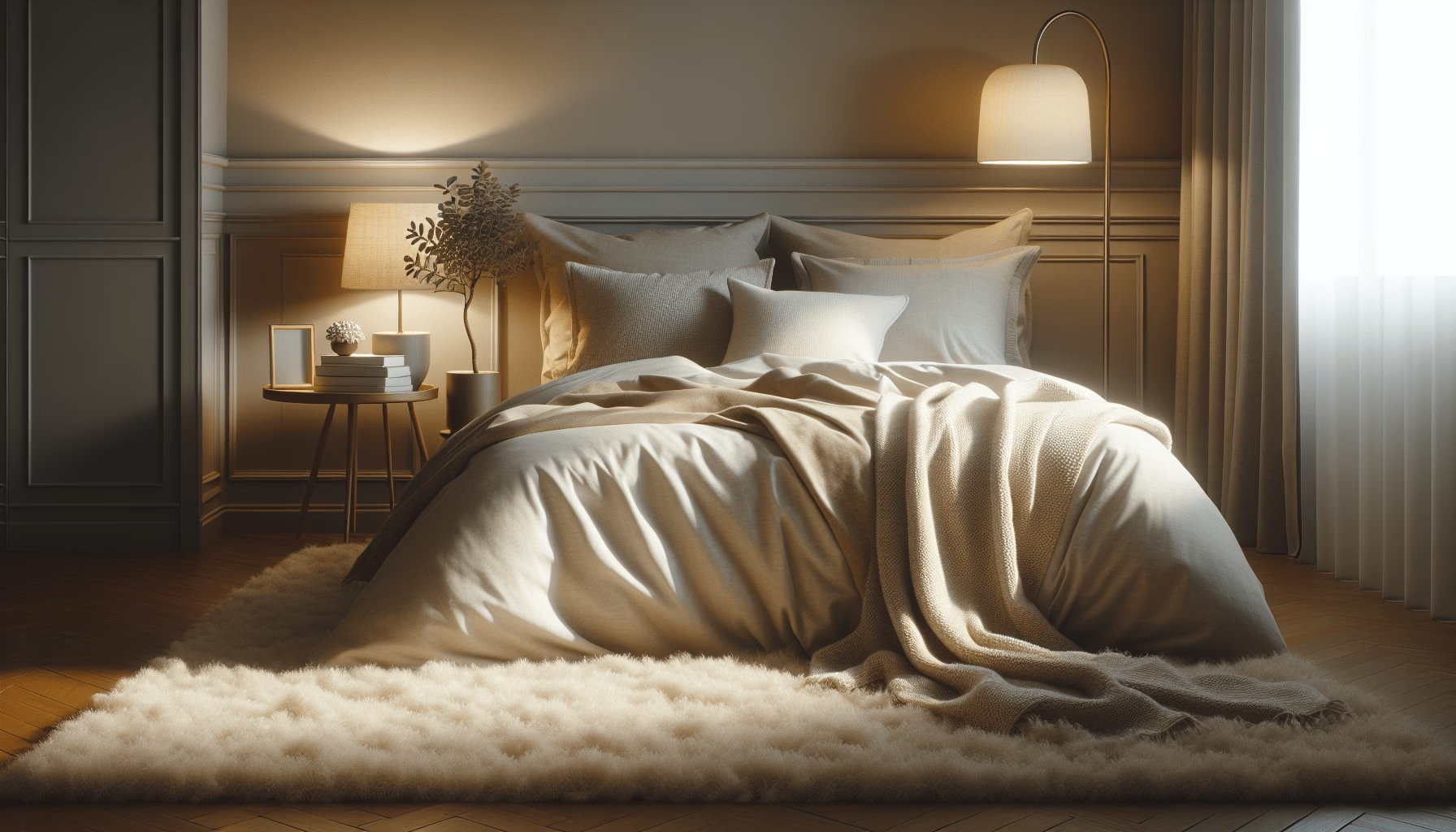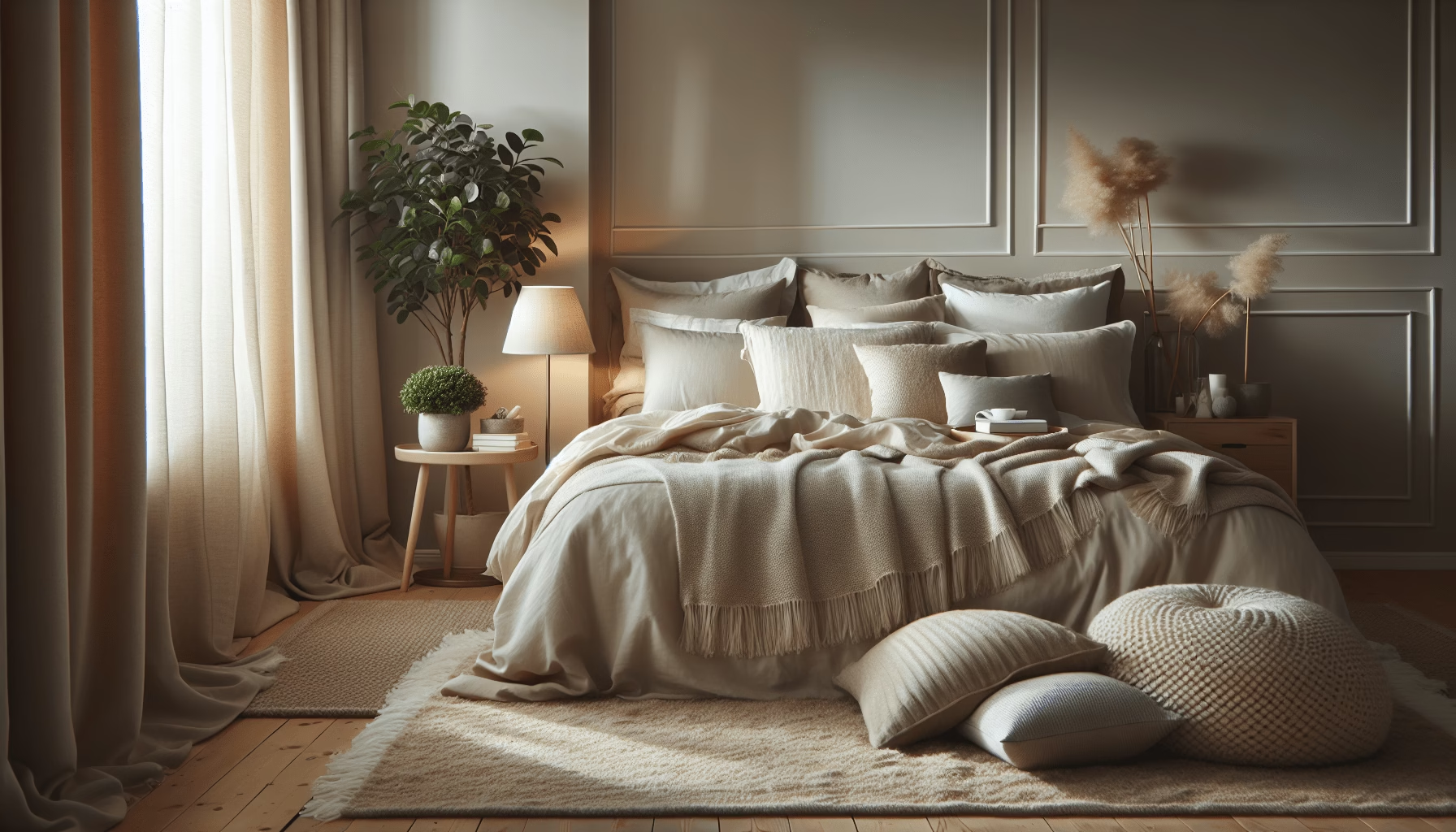7 Ways to Optimize Your Bedroom for Sound Sleep: Do you ever find yourself tossing and turning at night, unable to drift into that restful slumber you’ve been craving all day? Sleep, or the lack of it, impacts every aspect of our lives—from our physical health to our moods and even our productivity at work. In fact, having a bedroom tailored for optimal sleep can significantly improve your overall well-being. If you’ve been on a quest for better sleep, you’re in the right place. Let’s journey through seven delightful ways to transform your bedroom into a serene slumber saccharine.

Table of Contents
The Science Behind a Good Night’s Sleep
Before we dive into the tips for optimizing your bedroom, let’s understand why a good night’s sleep is crucial. Sleep is not just downtime for your body and mind. It’s an active process where your body restores, repairs, and rejuvenates itself. Proper sleep improves cognitive function, boosts mood, and even strengthens your immunity. A well-optimized bedroom acts as a cornerstone for achieving that rejuvenating sleep.
1. Creating the Perfect Ambience
Let’s be honest, a cluttered room leads to a cluttered mind. Your bedroom should promote peace and invitation to sleep. Reducing clutter can help relax your mind. Consider the essentials that contribute to a calming atmosphere: Does the room encourage relaxation and tranquility? Are the colors soothing?
Declutter and Organize
Start by decluttering and organizing your space. Say goodbye to those piles of laundry or stacks of magazines beside your bed. Think of your favorite hotel room and aim for that minimalist allure.
Perfecting the Palette
The color palette of your room plays a psychological role in how quickly you fall asleep. Soft, muted shades like blues, greens, and pastel tones can create a calming atmosphere. These colors can subtly signal your brain that it’s time to unwind.

2. The Role of Lighting: Let There Be (Less) Light
Lighting is a key player in your sleep environment. Your body’s internal clock, or circadian rhythm, relies heavily on light cues. This makes controlling the lighting in your bedroom absolutely essential.
Use Dimmable Lights
Investing in dimmable lights can allow you a slow transition from wakefulness to sleepiness. Turning down the lights in the evening can signal to your body it’s time to start winding down for the night.
The Power of Darkness
Consider blackout curtains for your windows. Complete darkness can encourage the production of melatonin, the sleepy hormone. If curtains are not an option, a comfortable sleep mask can work wonders too.
3. Mattresses and Pillows: The Foundations of Comfort
The architecture of comfort is built on good mattresses and pillows. Not every mattress fits every sleeper the same way—find one that works for your needs.
Choosing the Right Mattress
A good mattress should support your spine in a neutral position and help prevent back pain. Spend a good day mattress shopping—lie down, roll around, live a little! Make sure it suits your sleeping style (side, back, or stomach).
Pillow Talk
Pillows can make a significant difference in sleep quality. Choose pillows that align with how you sleep. Side sleepers might prefer firmer pillows, while stomach sleepers might benefit from softer ones or even no pillow at all. Your pillow should maintain your neck in a comfortable, neutral alignment with your spine.

4. Embracing Technology—But Not in Bed
Technology can be the bedrock of modern convenience but also the harbinger of sleep disruption. Our lives may revolve around screens, but they can wreak havoc on sleep schedules.
Screen-Free Zones
Establish your bedroom as a sanctuary from screens. This might mean moving the TV out; or taking the phone out of bed. Try setting up a wind-down routine an hour before bed, free from the glow of screens. This helps to signal to your body that it’s time for sleep.
White Noise Machines
For those who can’t eliminate technology entirely, consider integrating a white noise machine or app into your routine. These machines can create a constant soothing sound that masks disruptive outside noises, fostering a more peaceful environment.
5. The Role of Aromatherapy
Imagine walking into your bedroom to a calming, pleasant scent that lulls you into a peaceful slumber. Aromatherapy, the use of essential oils, can be a natural path to enhancing sleep quality.
Essential Oils to Consider
Lavender, chamomile, and bergamot can be your olfactory allies. Diffuse these oils before bed, or add a few drops to a warm bath. They can help relax your mind and body, preparing you for a restful night.
Diffusers and Alternatives
A good diffuser can gently disseminate these oils throughout your room. If that’s not your style, consider pillow sprays or linen mists with similar therapeutic properties.

6. Optimal Temperature: The Goldilocks Zone
The temperature of your bedroom is often underestimated when considering sleep quality. Striking that perfect balance is like finding the Goldilocks zone—not too hot and not too cold.
Setting the Ideal Temperature
Experts recommend keeping your room cool, around 60 to 67 degrees Fahrenheit for optimal sleep. A programmable thermostat can assist in keeping the temperature consistent.
Bedding Considerations
Don’t forget about your bedding! Natural, breathable fabrics like cotton or linen can help regulate temperature. Remember to switch up your bedding with the seasons for maximum comfort.
7. Personal Touches and Customization
Everyone has unique needs and preferences. Customizing your space to reflect your personality and accommodate your individual needs can help make your bedroom a personal oasis.
Add Personal Comforts
Think about what makes YOU feel comfortable. Maybe it’s an extra cozy throw, or a plush rug for your feet first thing in the morning. Infusing your space with elements that bring you joy and relaxation is invaluable.
Flexible sleeping arrangements
Do you share your space? Sometimes flexible sleeping arrangements can reduce disturbances. Consider a larger bed if space allows or experimenting with individualized blanket choices.

Conclusion: Tailoring Your Sleep Sanctuary
Crafting the perfect sleep space is a rich tapestry woven with careful considerations and personal preferences. It involves decluttering both the mind and the room, setting the stage with the right lighting, and ensuring the foundational comforts of mattresses and pillows are tailored to your needs. Embrace technology but set boundaries, consider the tranquil heart of aromatherapy, maintain that Goldilocks temperature, and lavish in the comfort of personal touches.
In the end, reinforcing the sanctity of your bedroom as a place for rest and rejuvenation can have rippling effects throughout all areas of your life. Here’s to sound sleep and refreshed awakenings! Sweet dreams!

